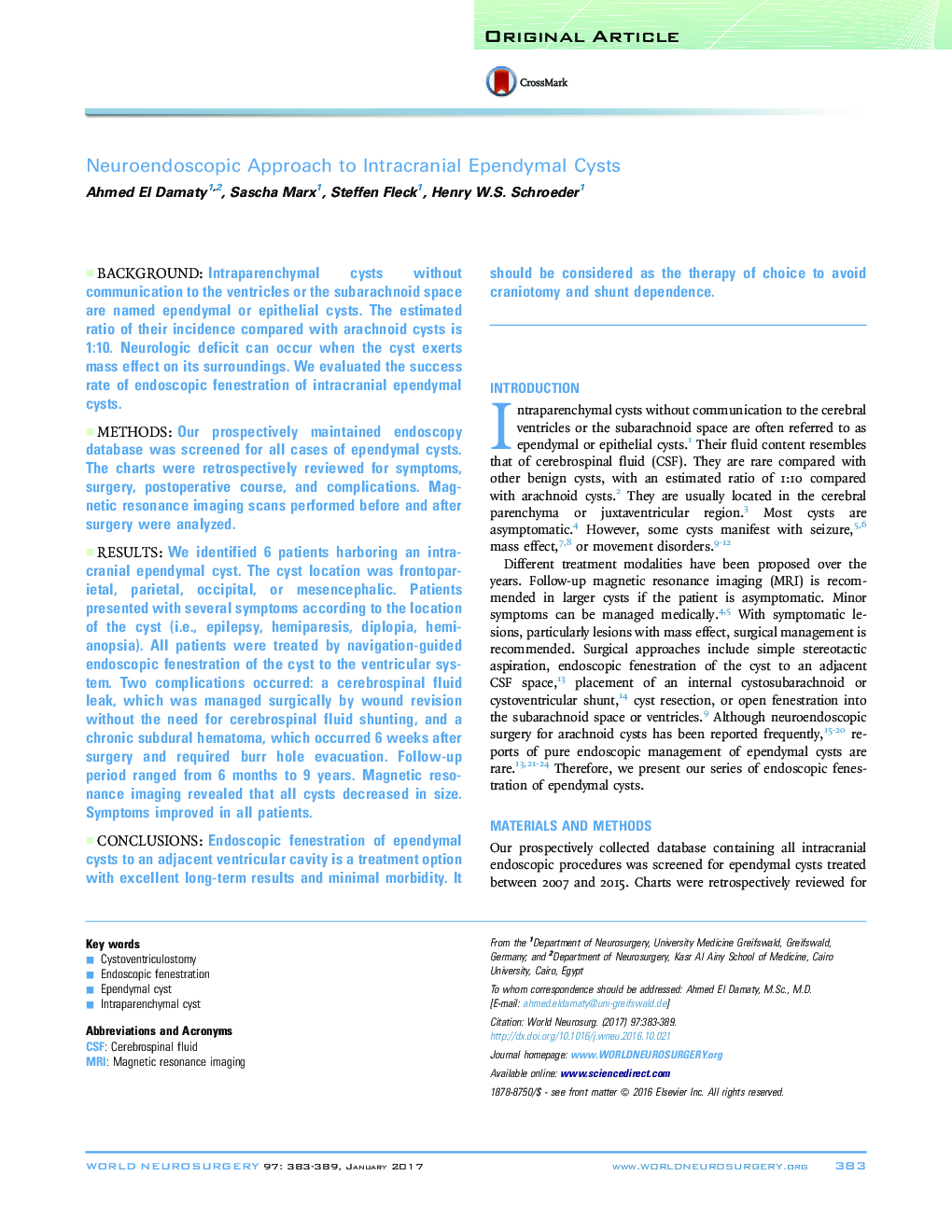| Article ID | Journal | Published Year | Pages | File Type |
|---|---|---|---|---|
| 5634732 | World Neurosurgery | 2017 | 7 Pages |
BackgroundIntraparenchymal cysts without communication to the ventricles or the subarachnoid space are named ependymal or epithelial cysts. The estimated ratio of their incidence compared with arachnoid cysts is 1:10. Neurologic deficit can occur when the cyst exerts mass effect on its surroundings. We evaluated the success rate of endoscopic fenestration of intracranial ependymal cysts.MethodsOur prospectively maintained endoscopy database was screened for all cases of ependymal cysts. The charts were retrospectively reviewed for symptoms, surgery, postoperative course, and complications. Magnetic resonance imaging scans performed before and after surgery were analyzed.ResultsWe identified 6 patients harboring an intracranial ependymal cyst. The cyst location was frontoparietal, parietal, occipital, or mesencephalic. Patients presented with several symptoms according to the location of the cyst (i.e., epilepsy, hemiparesis, diplopia, hemianopsia). All patients were treated by navigation-guided endoscopic fenestration of the cyst to the ventricular system. Two complications occurred: a cerebrospinal fluid leak, which was managed surgically by wound revision without the need for cerebrospinal fluid shunting, and a chronic subdural hematoma, which occurred 6 weeks after surgery and required burr hole evacuation. Follow-up period ranged from 6 months to 9 years. Magnetic resonance imaging revealed that all cysts decreased in size. Symptoms improved in all patients.ConclusionsEndoscopic fenestration of ependymal cysts to an adjacent ventricular cavity is a treatment option with excellent long-term results and minimal morbidity. It should be considered as the therapy of choice to avoid craniotomy and shunt dependence.
